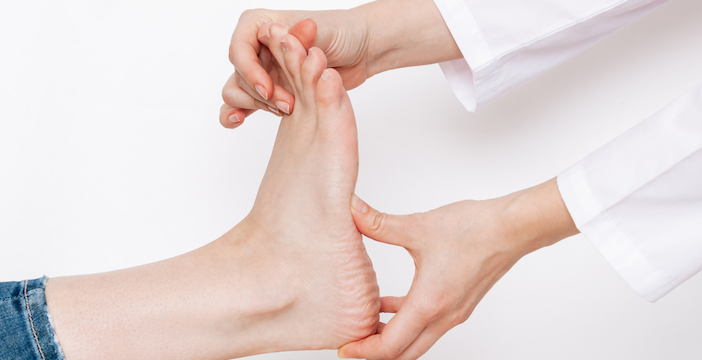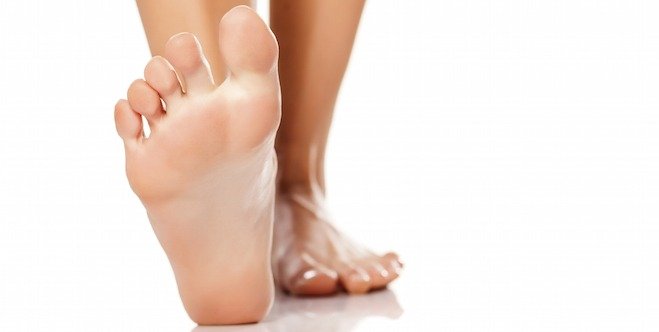
Paying close attention to wounds is important for people with diabetes. Common types of wounds include diabetic foot ulcers, arterial ulcers, venous ulcers and pressure ulcers. Prompt diagnosis and treatment of wounds in people with diabetes is crucial. Read on to learn more about diabetes and wound care.
Why is wound care important for people with diabetes?
People with diabetes may be at higher risk of wounds than people who don’t have the disease. Also, their wounds tend to heal more slowly and progress more quickly. Wounds that aren’t treated properly or take a long time to heal can lead to skin breakdown, infections and other complications.
The two main causes of wounds in people with diabetes are:
- Consistently high blood sugar levels, which can cause nerve damage (neuropathy) and reduced sensation in the body (especially your limbs)
- Narrowing of the body’s blood vessels and arteries
Types of wounds in people with diabetes
Common wounds in people with diabetes include:
Diabetic foot ulcers. Ulcers are open sores on the body caused by broken skin that fails to heal. Diabetic foot ulcers are a frequent complication of diabetes, and are caused by nerve damage and narrowing of the blood vessels that go to the feet. A foot ulcer looks like a red crater on the skin. It usually appears on the side or bottom of the foot or on the top of a toe. This crater can be surrounded by a border of thickened, callused skin.
Arterial ulcers. Arterial ulcers are caused by poor circulation, and usually develop in the lower leg or ankle. They often have smooth, round edges, and drain small amounts of fluid. Arterial ulcers have a pale pink or white base (due to the lack of blood flow) with yellow or black tissue in it.
Venous ulcers. Venous ulcers also form around the lower leg or ankle. They tend to have an irregular shape, and may have a large amount of drainage; they also cause swelling of the leg and ankle.
Pressure ulcers. Pressure ulcers usually occur in tissue around bony areas on the body (for example, the elbows or tailbone). As the name suggests, pressure ulcers are caused by prolonged pressure against the skin. They begin as bright red marks, which can then develop blisters or breaks in the skin.
How to identify a wound that needs care
If left untreated, many diabetic wounds can become infected, leading to blood poisoning, gangrene (dead tissue) or even amputation of a limb. That’s why it’s important that you do daily self-checks of your feet and lower legs, and monitor any wounds closely. Catching wounds early is the only way to reduce your risk of complications.
Wounds should be brought to the attention of your diabetes healthcare team under the following circumstances:
- If they are extremely painful (for example, tingling or burning)
- If they are numb or painless (this could be a sign of severe nerve damage)
- If they are swollen or very dark-coloured
- If there are signs of infection (for example, if pus develops or they have a bad odour)
- If you feel feverish or chilly (this could be a sign of a serious infection)
- If the wound is getting worse or not healing
If you are experiencing any of the above symptoms, it is very important that you have your wound examined by your diabetes healthcare team as soon as possible. They can identify the wound and advise you how best to care for it. The faster you get the appropriate treatment, the more likely you are to prevent complications.
Treatment of wounds
The management of diabetic wounds involves a number of treatments, including:
- Removing dead or infected skin tissue around the wound to help it heal. This is called debridement.
- Keeping the wound bandaged or covered with a special wound dressing. While you may have heard that it’s important to “air out” wounds, experts now know that keeping a wound uncovered actually increases the risk of infection and slows healing.
- Cleaning your wound daily with soap and water. Don’t use hydrogen peroxide or soak your wound in a bath or whirlpool, as this may reduce healing and increase your risk of infection.
- Keeping pressure off your wound, especially if it’s on your foot. This may mean you need to use crutches, special footwear, or a brace. Reducing pressure helps wounds heal faster. Read more about finding your footing with diabetes.
If your wound doesn’t heal in about a month or becomes infected, you may need other treatments. These can include surgery (most often to remove pressure-causing problems, such as bunions) and hyperbaric oxygen therapy, which involves breathing pure oxygen in a special room in order to help your body heal.
When dealing with diabetic wounds, your diabetes healthcare team should include these important healthcare professionals who can help manage your wound care treatment:
- Chiropodists and podiatrists specialize in treating foot diseases and disorders.
- Pedorthists specialize in orthotics, footwear and footwear modifications
Prevention of wounds
There are a number of things you can do to prevent a diabetic wound. Check out these 5 tips for wound prevention.
- Control your blood sugar by meeting the targets set by your diabetes healthcare team. This includes taking your diabetes medication exactly as prescribed by your healthcare team. Medications that help keep your blood sugar under control will also help protect you from developing a wound. Whether you take pills, insulin or other injectable medications or insulin, your medication helps ensure that your blood sugar levels are at target. Read more about monitoring you blood sugar in this article.
- If you smoke, try to quit. Smoking causes nerve and blood vessel damage, both of which can increase your risk of getting a wound.
- Wear appropriate shoes and socks at all times. Your diabetes healthcare team can help you figure out what type of footwear is best for you. As well, don’t walk in bare feet: this increases your risk of injury to a toe or foot.
- Inspect your legs and feet every day for cuts, cracks, blisters, redness, or any signs of an abnormality. Each time you visit your diabetes healthcare team, remove your shoes and socks so your feet can be examined.
- Exercise regularly. The benefits of exercise, especially weight-bearing or aerobic exercise, include better blood sugar control, weight loss, decreased risk of heart disease, and increased energy levels. All of these things can help reduce your risk of getting a wound. If you have neuropathy or are overweight, talk to your healthcare team about exercises that are appropriate for you. If you do have a diabetic wound, some research suggests that exercise may help increase the rate of wound healing.




